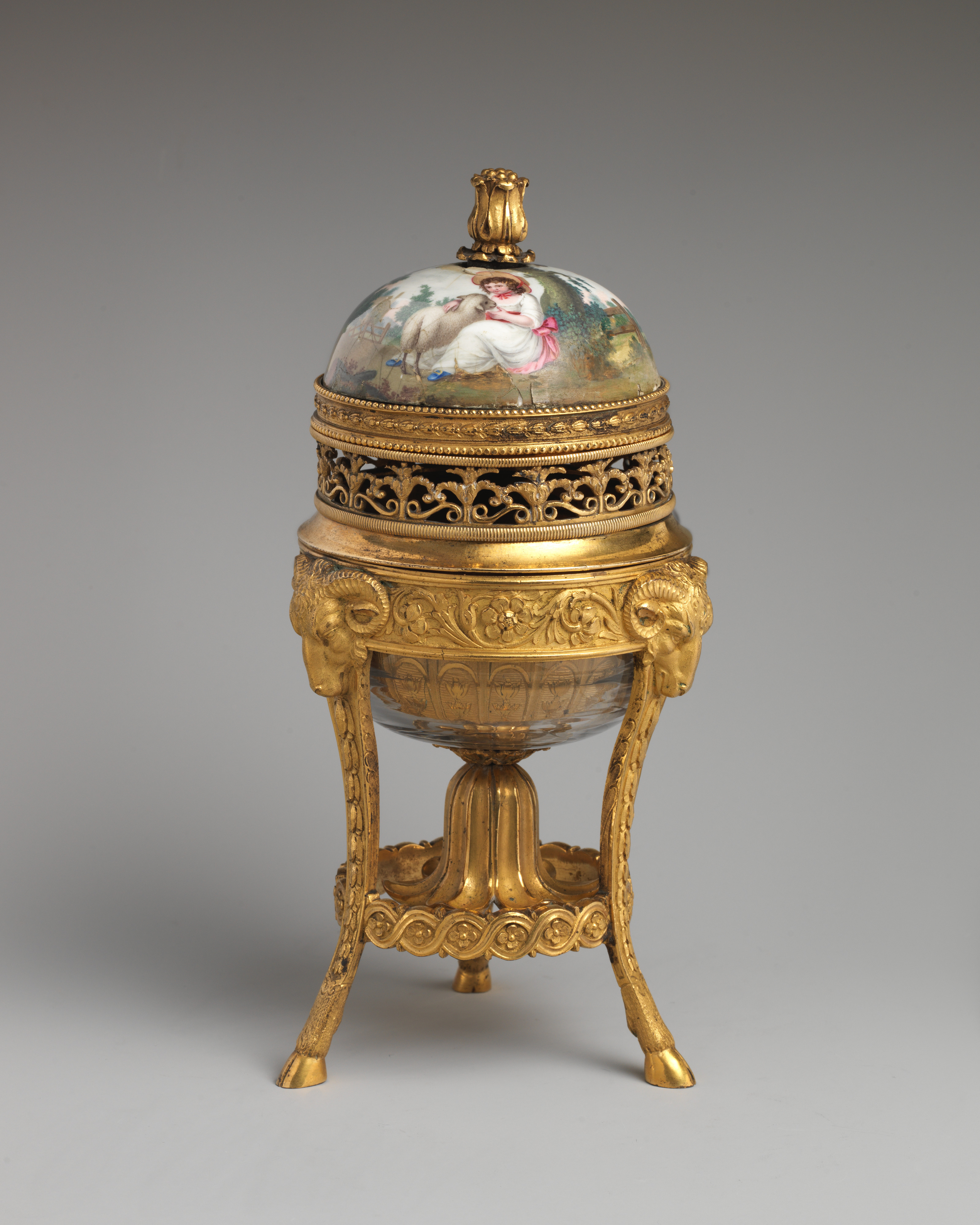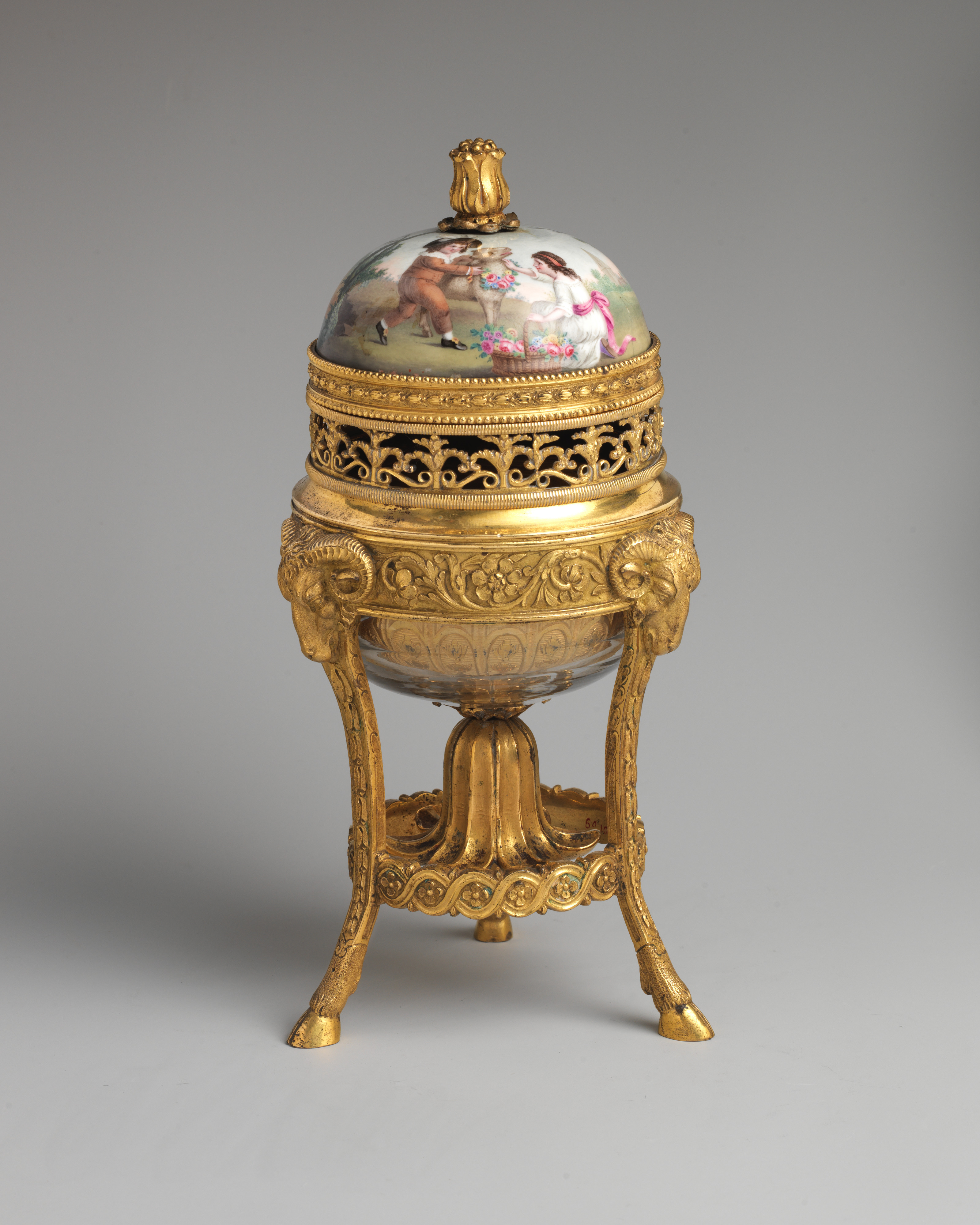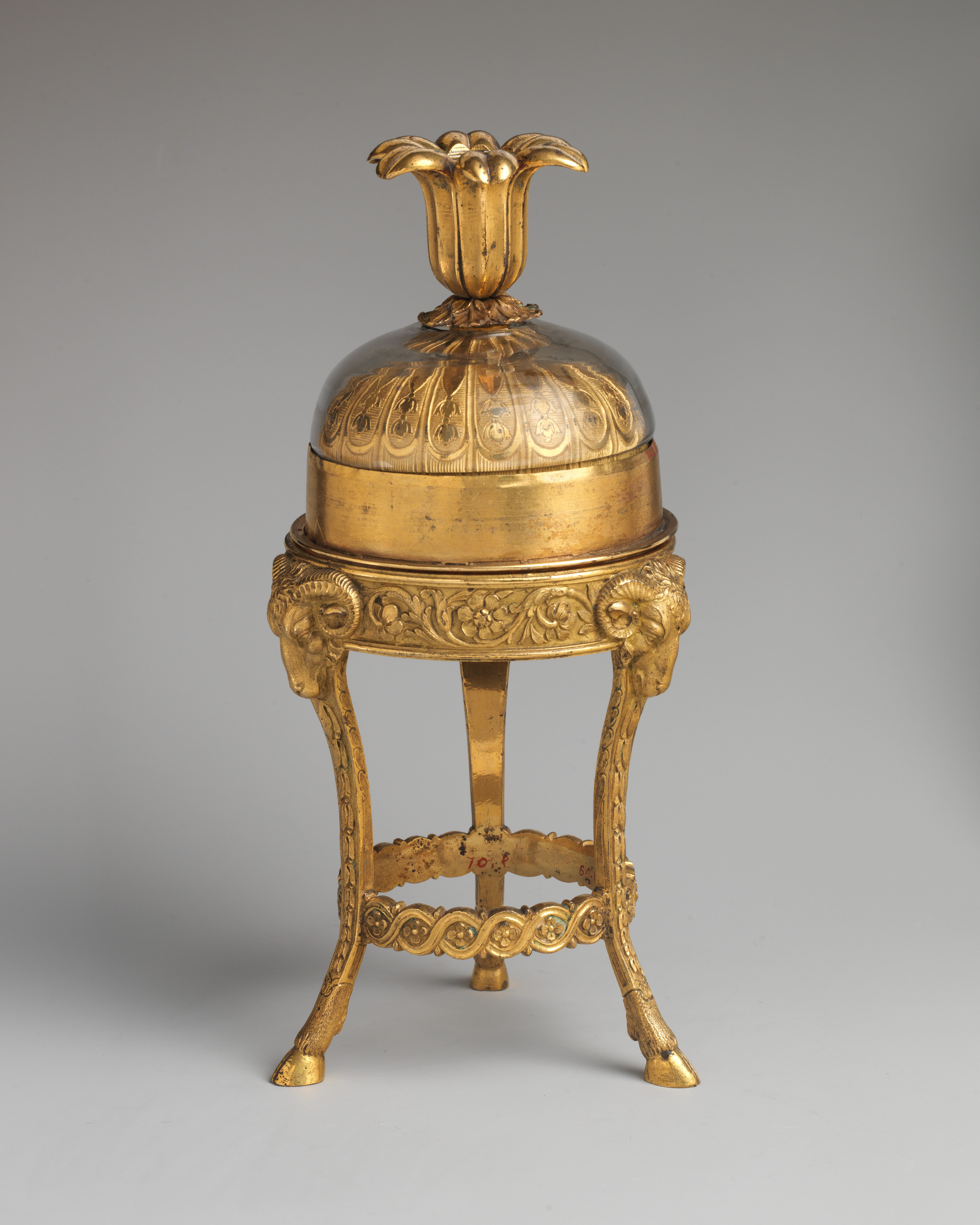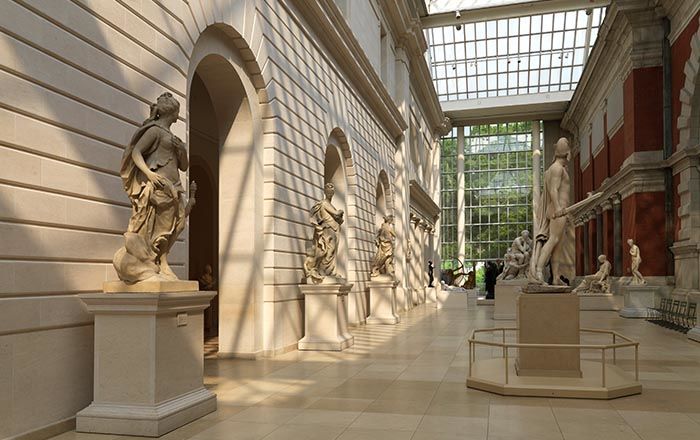Pair of cassolettes
Enameler Willliam Hopkins Croft
probably after William Hamilton British
Not on view
These ornate cassolettes are mounted in gilt bronze, known as ormolu (from the French "or moulu," meaning ground gold). Their enameled covers—decorated with pastoral scenes of children and sheep, in the style of William Hamilton—were made by William Hopkins Croft (or Craft), who exhibited seventeen enamels at the Royal Academy between 1774 and 1795.
Cassolettes, also known as perfume burners or essence pots, were initially designed as functional vessels for burning or vaporizing scents to perfume a room. Their form was soon adapted for purely decorative objects, however, and it is unclear whether these cassolettes were ever intended to disperse scent.
Enameled objects like this one were intended to imitate the lustrous quality of porcelain at more affordable prices. By the middle of the eighteenth century, technological innovations had made it possible to roll copper, instead of the far costlier gold, into very thin sheets. Powdered glass mixed with minerals (to determine the opacity and color of the enamel) would then be applied onto the copper sheets and fired at high temperatures. A design—whether a famous portrait, generic pastoral scene, or floral motif— could be painted on by hand or copied from an engraving through the newly invented process of transfer printing. Many enameled objects combined both methods of decoration and would be refired after the application of each new layer or color.
This image cannot be enlarged, viewed at full screen, or downloaded.
This artwork is meant to be viewed from right to left. Scroll left to view more.







